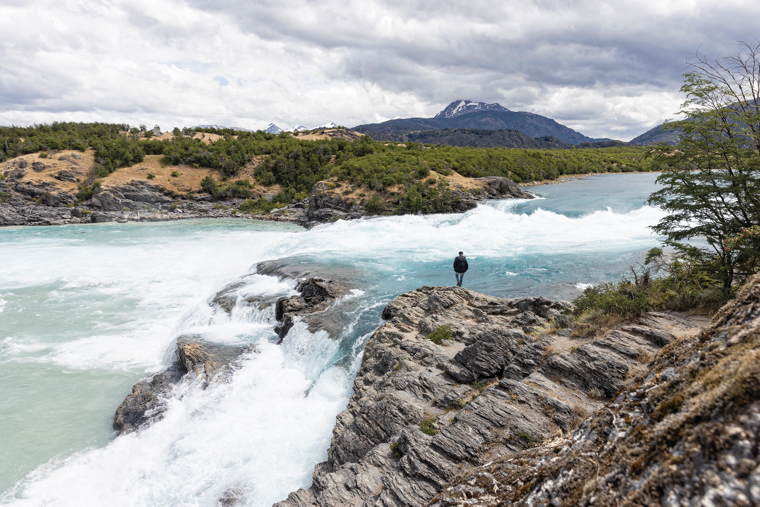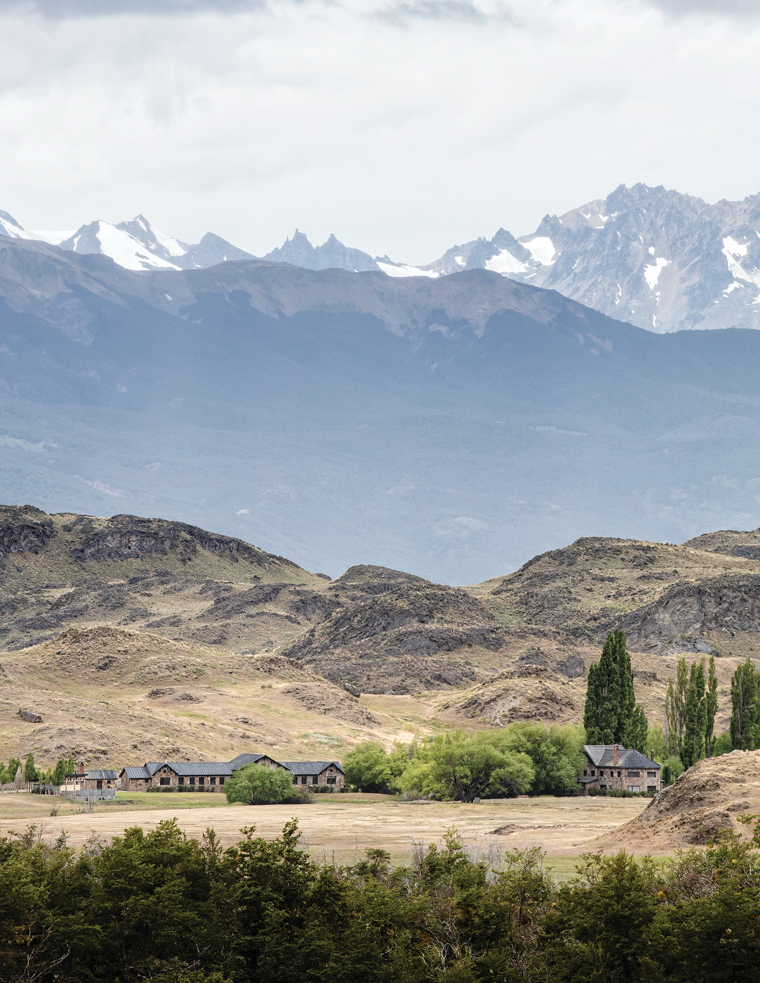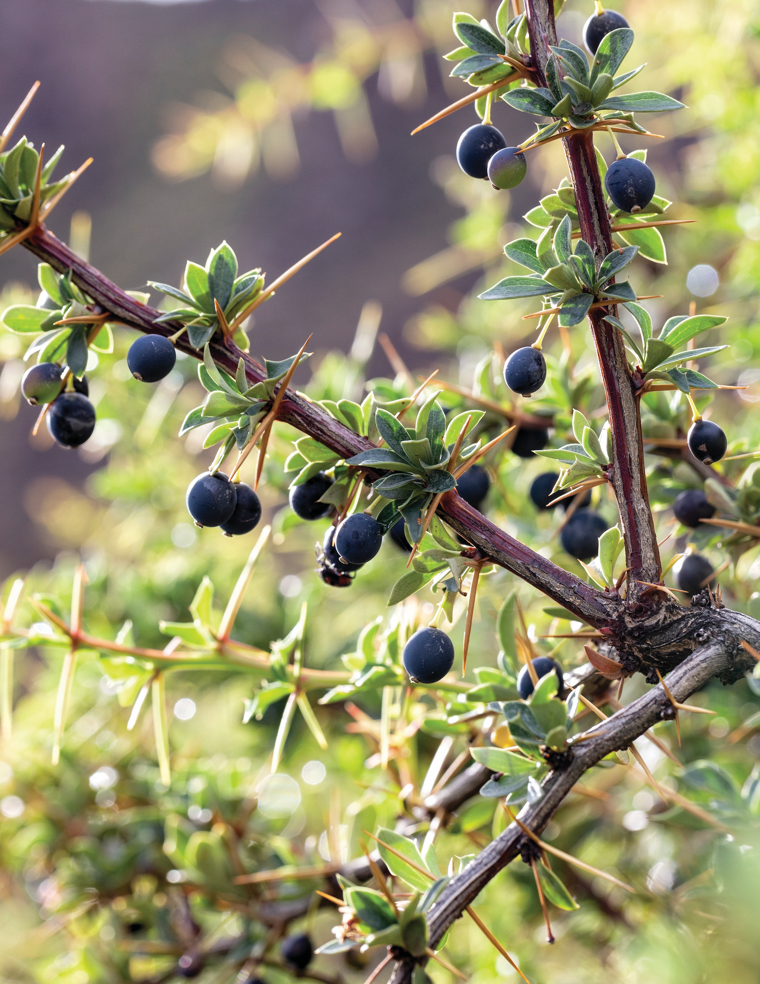Reaching the heart of the Andes is an epic journey, with a payoff to match.
Grand landscapes work in two directions, pushing us to look both outward, to the limits of our sight, and inward, to ourselves. Argentinean author César Aira said as much in his novel La costurera y el viento, writing, “Is this Patagonia? And if this is Patagonia, what am I?”
What I was, late last year, was feeling cramped and cornered in Europe. I needed a goal, even if it was an old one. I knew a grand landscape was the way out, and Patagonia was the one I’d long wanted to see. Like a love letter pushed to the back of the drawer, I needed only to touch the envelope, to breathe its perfume, to remember that old desire.
So perhaps it was sentimentality that had led me to the Andes Mountains, where a herd of reclining guanacos lounged in a verdant pasture rich with dandelions. I had waited so long to see it all: the wide valleys ringed by a crown of mountains still snow-touched in the last weeks of spring; the marbled blend where the green waters of the Río Baker met the brown ribbon of the Río Nef, both white where they dashed over the rocks; the lumpy, tree-covered foothills bunched together like the folds of a dropped rug.
I had come to Patagonia National Park, a 700,000-acre expanse enveloping Chile’s Chacabuco Valley, to stay at the new Explora lodge, an intimate compound of American Craftsman-style stone buildings set in a flat expanse surrounded by pine-covered mountains. Explora’s à la carte approach to activities meant each evening, over cocktails, a guide and I crafted a plan – usually hiking, cycling, or kayaking – for the coming day.
That Explora is the only lodge permitted to operate within the park gives its refinement a sense of the improbable and makes returning to its comfort after a day of sweat and elevation all the more enticing. It helps that the surroundings are satiating in and of themselves, and each morning a guide and I wandered off into the rough country, with packed lunches and an extra pair of socks in our pockets, feeling lucky to be so free from want.
Advisor Tip
“Patagonia National Park is still very remote and undiscovered. It can be windy anywhere you go in Patagonia, especially in April, so pack a windbreaker – and a pair of waterproof pants if you’re planning to hike.”

A Chacabuco Valley trek.
During my first day, on a ten-mile ramble through the Avilés Valley, my guide, Iñaki Esnaola, pointed to a squat shrub ripe with small blue berries. “This is the calafate,” he said. “Local people say if you eat the berry, you’ll return to Patagonia.”
Still on a high from my arrival, I was far from thinking about return. I’d set my sights on Patagonia a decade before. From my home in Canada, I’d ridden my motorcycle south for nearly a year, aiming toward that distant land over the curve of the earth. Ultimately, I miscalculated and arrived in Chile to a frigid July winter. Patagonia was just there; a thousand more miles would have cinched it. Yet the closer I got, the farther away it seemed. Crossing the snow-covered Andes at the Paso Internacional Los Libertadores proved nearly fatal, the cold seeping into my bones and slowing my mind. When I arrived in Santiago, I knew going any farther south would be too difficult. And so, Patagonia slipped away from me.
Conservationist Douglas Tompkins did something similar in 1968, driving down from California in a van with a group of adventure-junkie friends. In deepest Patagonia, they found a world untouched by mass tourism or commercial enterprise. Twenty years later, Tompkins returned to funnel the fortune he’d made with his apparel lines The North Face and Esprit into purchasing tracts of land to conserve the Patagonian wilderness. In 2004, he and his wife, Kris Tompkins (the former CEO of Patagonia), acquired Estancia Valle Chacabuco, a massive ranch in the Aysén region’s Chacabuco Valley. In 2018, they gifted the land to the Chilean government to help form the core of Patagonia National Park.
An intense period of change began. The government lifted hundreds of miles of fences and extricated livestock from the area. It built rails, campgrounds, and other infrastructure, including ranger stations for the Chilean Parks Agency (CONAF), along with lodging, a museum, and park headquarters (later managed by Explora) nestled on a flat plain near the Río Chacabuco. Renovations are currently underway, and soon Casa Butler, a home once used by visiting conservationists, will be available for guests to rent.
Rewilding Chile is another of Tompkins’ legacies and forms a major part of the park. The former ranch had set the natural balance of the landscape akimbo. Tens of thousands of grazing sheep left the grassland little opportunity to recover. The endemic guanacos, a llamalike camelid, had retreated to higher altitudes because they had been fenced out of the area, and the pumas, despite being a protected species in Chile since 1980, were hunted to the brink by leoneros, or lion men, hired to protect the livestock.

Explora Patagonia National Park.
Now, with the sheep (and fences) gone, the guanacos have returned to the low valleys, and with them, the pumas. They were thrillingly common – every day, someone came to the lodge with news they’d spotted a puma perched on a rocky crest or stealing into a tuft of chapel bushes. Even the estancia’s last leonero has taken an about-turn, trading his rifle for binoculars in his new role as the park’s puma guardian. The pumas, along with local populations of Darwin’s rheas and the endangered huemul deer, have all rebounded. Workers from Rewilding Chile, Tompkins’ nonprofit conservation organization, opened Chile’s first on-site breeding center for Darwin’s rheas, and they also bring wounded Andean condors from across Chile to the park for rehabilitation. Lodge guests can contribute financially to support their efforts.
“We want people to become custodians and defenders instead of mere visitors,” said Gerardo Acha, manager of Explora Patagonia National Park. “Feeling we’re a part of something bigger is rewarding at a different level.”
It was Acha who told me about a mother puma with two cubs who had made the valley surrounding the lodge her territory. As I walked the park, I looked for their tracks but saw nothing save the deep, two-toed indents of guanacos and a few marks left by armadillos.
“Maybe you didn’t see her, but she definitely saw you,” said Manuel Montti, one of the park guides. The sure sign was hearing the warning shout of a guanaco. “They’re never wrong. Once you hear a guanaco call, there’s a puma around.”
After we’d walked a mountain trail together, with Manuel pointing out flowers, I began to see for myself the clusters of beach pea, golden orchids, and yellow lady’s purse covering the hillsides, along with edible fungi, which the locals call pan de indio, growing on the bark of trees. After watching Manuel pick one and pop it into his mouth, I had a ready snack anytime I was out.

Carrot squash soup at the lodge.
Held up to the lightest scrutiny, Patagonia is revealed as a rather nebulous concept, a country of the mind founded on a blend of European adventurists and local myths. As a region, it straddles both Chile and Argentina, but its borders are undefined, set loosely around the scooped valleys and lakes left by receding glaciers. Like Timbuktu, it’s synonymous with the end of the earth – it’s the farthest humans walked from Africa. That distance, and the imposing landscape, left the first visitors with fanciful notions. Sailors and mountaineers returned home with stories of giants (the word “Patagonia” is a corruption of Patagones, the name Spanish explorers gave to the area’s Tehuelche Indians), mountains of gold and silver, and a lost capital, the City of the Caesars. In the Chacabuco Valley, it’s still possible to find pieces of ancient civilizations in the arrowheads and cave paintings left behind by the native population.
Today, Patagonia feels like one of the last outposts of freedom, a private corner in a crowded world, a persistent illusion of the Old West. The comparison isn’t erroneous: A gold rush in the late nineteenth century brought many prospectors in this direction. Log cabins and corrals made of rough-sawn pine still sit in grassy leas. Gauchos, astride horses and cloaked in berets and woolly chamantos, tend herds of sheep. There’s a sense of extended time, perhaps because the outside world hasn’t been here long – the road only reached the nearby town of Cochrane in 1988.
A 45-minute drive from the lodge, on the southern limits of Patagonia National Park, Cochrane is a blockish town sidled against a thigh of mountain. What’s lovely about it is true of all the best Rocky Mountain towns: There’s a craft brewery and a museum, and streets lined with wooden chalets. I saw people sitting around bonfires roasting meat, apple-cheeked children walking about in thin sweaters, and smiling dogs roaming, giving chase to half-ton trucks loaded down with tight bundles of wool.
Jorge Molina, a kayak instructor who took me out on the Río Cochrane, remembered when there was no road and goods were transported into town by boat. “Everything was done on the river,” he said. “I was born on it.” That former heavy traffic makes the water’s clarity seem like a miracle. As we paddled, Molina took a portable depth sounder from his life vest and pointed it toward the distant but visible river bottom. “Forty-one point two meters,” he said. Some 139 feet. Looking down, I could see brown trout and the bedrock that tinted the river the color of a husky’s eyes.
We make travel dreams come true.
Whether you’re planning, going, or just dreaming (for now), we’re here for you.

Indigenous calafate berries.
On my last day, I mounted the range that overlooks the Río Chacabuco, and the entire world felt laid out before me. Across the sunlit valley, bright patches of snow looked as pure as spilled cream. French aviator and author Antoine de Saint-Exupéry, who was one of the first to fly over these mountains, saw them as peaceful but “tense with some dark potency.”
There’s a force to everything in Patagonia – the wind, the waterfalls, the sheer mountain faces rising from wide valleys cut with opal rivers. Yet I could not shake the feeling of fragility that emanated from the land. It was fragile the way a sunrise is, or Mozart’s “Ave verum corpus.” At the core of its beauty lies a tenuous fortitude that insists on its ephemerality. Pure water and virgin forest, like beautiful music and youthful innocence, are the easiest to taint.
Walking with Explora’s guides – most having lived various lives, as artists, veterinarians, and financiers, before wanting something else from life – or chatting with them over pisco sours, I could sense their commitment to preserving not only the physical area around us, but the idea of what it represented: Quiet. Rejuvenation. A second chance.
Heading back to the lodge, I took a calafate berry from a nearby bush and held it between my teeth. I dreaded leaving, if only because I lacked the words to relate what I’d seen. The landscape is as impossible to describe as it is to photograph. It was too grand, just as my desire to be there had been too grand to articulate. “How was Patagonia?” people might ask. And I could only say: Good things come to those who wait.
